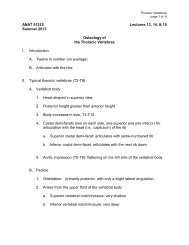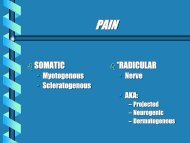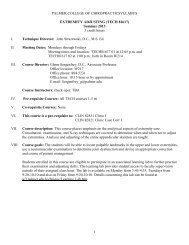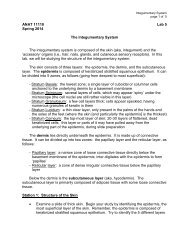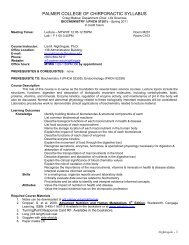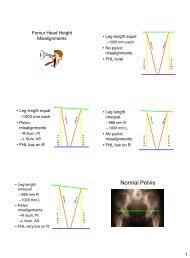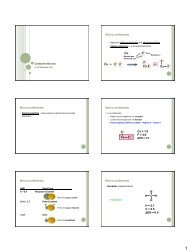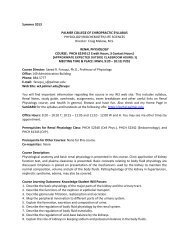POISE-SkyLite User Guide - Palmer College of Chiropractic, Intranet ...
POISE-SkyLite User Guide - Palmer College of Chiropractic, Intranet ...
POISE-SkyLite User Guide - Palmer College of Chiropractic, Intranet ...
You also want an ePaper? Increase the reach of your titles
YUMPU automatically turns print PDFs into web optimized ePapers that Google loves.
CHAPTER 2<br />
USING SKYLITE<br />
Starting <strong>SkyLite</strong><br />
To start <strong>SkyLite</strong> you can either:<br />
• Double-click on the <strong>SkyLite</strong> icon. This will open the last session closed by default.<br />
• Double-click on the SKYLITE.EXE file. This will open the last session closed by<br />
default.<br />
• Double-click on a session file (.ses). This will open that session.<br />
• Open <strong>SkyLite</strong> from the Start button using the Programs option. This will also<br />
open the last session closed by default.<br />
Exiting <strong>SkyLite</strong><br />
To exit from <strong>SkyLite</strong>, you can either:<br />
• Click on the Exit toolbar button.<br />
• Click on the standard Windows Close button.<br />
• Select the Exit option from the Session menu.<br />
Exit All<br />
Select the Exit All option from the Session menu to close and exit from all currently<br />
running <strong>SkyLite</strong> sessions.<br />
See page 19.<br />
See page 17.<br />
Sessions<br />
A session is a network link between your computer and a remote host. Starting a session<br />
does not automatically connect you to, or log you on to, your host system. You can<br />
configure <strong>SkyLite</strong> to automatically connect and log on however, sending your username<br />
and password to a system, and/or auto-starting a macro, and/or auto-dialing a modem<br />
connection.<br />
By default, <strong>SkyLite</strong> starts up with the session that was used the last time you ran <strong>SkyLite</strong>.<br />
If you have no previous valid session, <strong>SkyLite</strong> will not connect to any system, and you<br />
must set up a session using the New option on the Session menu.<br />
You can open more than one session at a time, either by starting multiple copies <strong>of</strong><br />
<strong>SkyLite</strong> (from Program Manager) or via the Open Another command on <strong>SkyLite</strong>’s<br />
Session menu.<br />
Session templates can be generated. New sessions can be based on the parameters<br />
established in these templates. A template is based on a previously created session file and<br />
contains all the data saved in that file.<br />
Creating a New Session<br />
The following section tells you how to create a session. You can also configure a session<br />
without <strong>SkyLite</strong> running.<br />
To set up a new session:<br />
1. Select New from the Session menu. If more than one Session Template is<br />
available, a dialog appears. Select the required template from the dialog and select<br />
OK, or select Cancel if no template is required. If only one template is available,<br />
this will be used by default.<br />
2. The Configure Session dialog is then displayed. This is also available from the<br />
Configure menu.<br />
<strong>POISE</strong>-<strong>SkyLite</strong> <strong>User</strong> <strong>Guide</strong> 15



